By Michael D. Hull
Shivering and stamping their feet in the snow, three American soldiers warmed their hands over a small fire at an observation post. They were weary, dirty, and hungry, and a long way from home.
Three other GIs shuffled along to relieve them after a while, and one said, “Merry Christmas.” The first three looked up in surprise, and one of them replied slowly, “We thought tomorrow was Christmas.”
The soldiers were helping to guard the perimeter defense line around the town of Bastogne in southeastern Belgium, not far from the Luxembourg border. They were surrounded by German forces, and there was not much Christmas cheer to go around that cold, snow-covered, fog-shrouded December more than 60 years ago.
Yet, although they did not know it at the time, those GIs of the 101st Airborne “Screaming Eagle” Division were writing a glorious chapter in the history of their army. The name of Bastogne would be stitched proudly on American battle flags alongside Valley Forge, Gettysburg, San Juan Hill, Chateau Thierry, the Marne, Bataan, St. Lo, Remagen, and Pork Chop Hill.
Christmas 1944 found the Screaming Eagles, veterans of Normandy and Holland, and Combat Command B of the 10th Armored Division defending besieged Bastogne while the Battle of the Bulge—Adolf Hitler’s last desperate counter-offensive of World War II—swirled around them. It was the first major battle fought by American soldiers in winter, and the one in which they suffered the greatest number of casualties: 76,890 killed, wounded, and missing.
Bastogne, an upland town 43 miles south of Liège in the Ardennes Forest region, was the junction of a railroad and seven highways lacing Belgium and Luxembourg. It lay on the center line of the German advance and was a vital strategic objective. Its 10,000 American defenders, outnumbered four to one, held firm. They groused because the enemy breakthrough had deprived them of anticipated furloughs in Paris, but they sang carols and put up makeshift Christmas trees as enemy artillery hammered away and bombs fell.
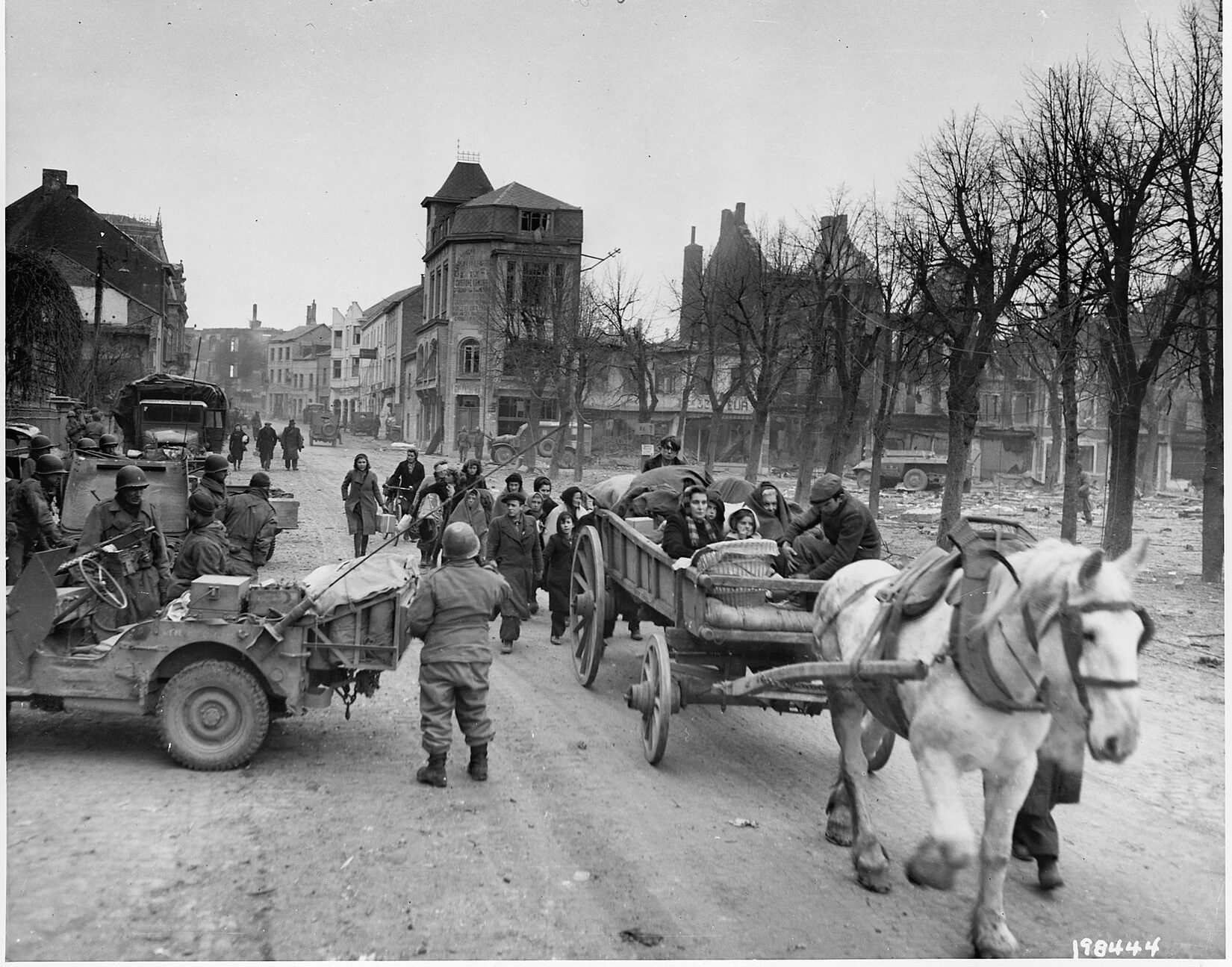
The first snow had fallen in the Ardennes Forest on December 9. Before dawn on Saturday, December 16, 1944, German guns blasted a thinly-held 100-mile front of Lt. Gen. Omar N. Bradley’s U.S. First Army. The “ghost front,” so called because it had been the quiet sector of the Allied line, was manned by four U.S. infantry divisions—the green 99th and 106th, and the 4th and 28th, which were resting after being mauled in the recent Hürtgen Forest campaign. Three panzer armies—13 infantry divisions and seven panzer divisions—crashed through the American lines. Hitler’s objective was to split the British-Canadian and American Armies, reach the River Meuse, and capture the strategic port of Antwerp in Belgium.
The German breakthrough caught everyone off balance, from the front-line GIs all the way up to General Dwight D. Eisenhower, the supreme Allied commander. Confusion and inertia gripped Eisenhower’s headquarters for several critical hours, and some senior officers believed that the enemy thrust was merely a spoiling attack. But two of Field Marshal Gerd von Rundstedt’s panzer divisions had cracked wide open Maj. Gen. Troy Middleton’s VIII Corps, and panic was widespread in the field as the German columns thundered westward through Belgium. Allied communications were chaotic, and no one in the outposts or headquarters map rooms was sure of what was happening.
As the panzers and seasoned German infantry punched through the American lines, many GIs threw away their rifles and ran in terror. Large quantities of equipment, heavy weapons, ammunition, and vehicles in good running order were abandoned. Roadsides in the Ardennes were littered with discarded trucks, jeeps, halftracks, and gun carriages. One advancing American tank column was forced to churn across mud and snow covered fields because the nearest available road was choked with fleeing soldiers.
In the Schnee Eifel sector, two regiments of the U.S. 106th Infantry Division, between 8,000 and 9,000 men, surrendered to two divisions of the German 66th Corps. The Army official history called it “the most serious reverse suffered by American arms during the operations of 1944-1945 in the European theater.”
But other U.S. units, both seasoned and green, stood and fought valiantly as powerful German Panther and Tiger tanks, followed by infantry, loomed out of the fog and snow. In some locations, small pockets of American resistance, two or three GIs with a machine gun or bazooka and a minimum of rounds, defended a bridge or crossroads and helped to upset the enemy timetable for a few hours. Many Americans died, and their gallantry will never be known.
On a slope overlooking a strategic crossroads at the Belgian village of Lanzerath, a platoon of the untested U.S. 99th Infantry Division led by Lieutenant Lyle J. Bouck halted a column of panzers, paratroopers, and Waffen SS soldiers for 18 critical hours. The Americans fought until their machine guns and carbines burned up or ran out of ammunition. When the Germans at last overran their position, the stubborn GIs were pulled bodily from their foxholes. Only two Americans were killed in the encounter, but many were badly wounded. The enemy toll was 509 casualties. “We never surrendered,” Bouck reported proudly. “We were captured.”
At another important road junction, St. Vith, troops of the 7th Armored Division under Brig. Gen. Bruce C. Clarke held firm for a week before withdrawing just as the last escape route was closing. And other U.S. units resisted gallantly at Berg, Butgenbach, Spa, Trois Ponts, Stoumont, Stavelot, Houffalize, and Elsenborn Ridge, where troops of Maj. Gen. Leonard Gerow’s Fifth Corps resisted repeated attacks by four Nazi divisions.
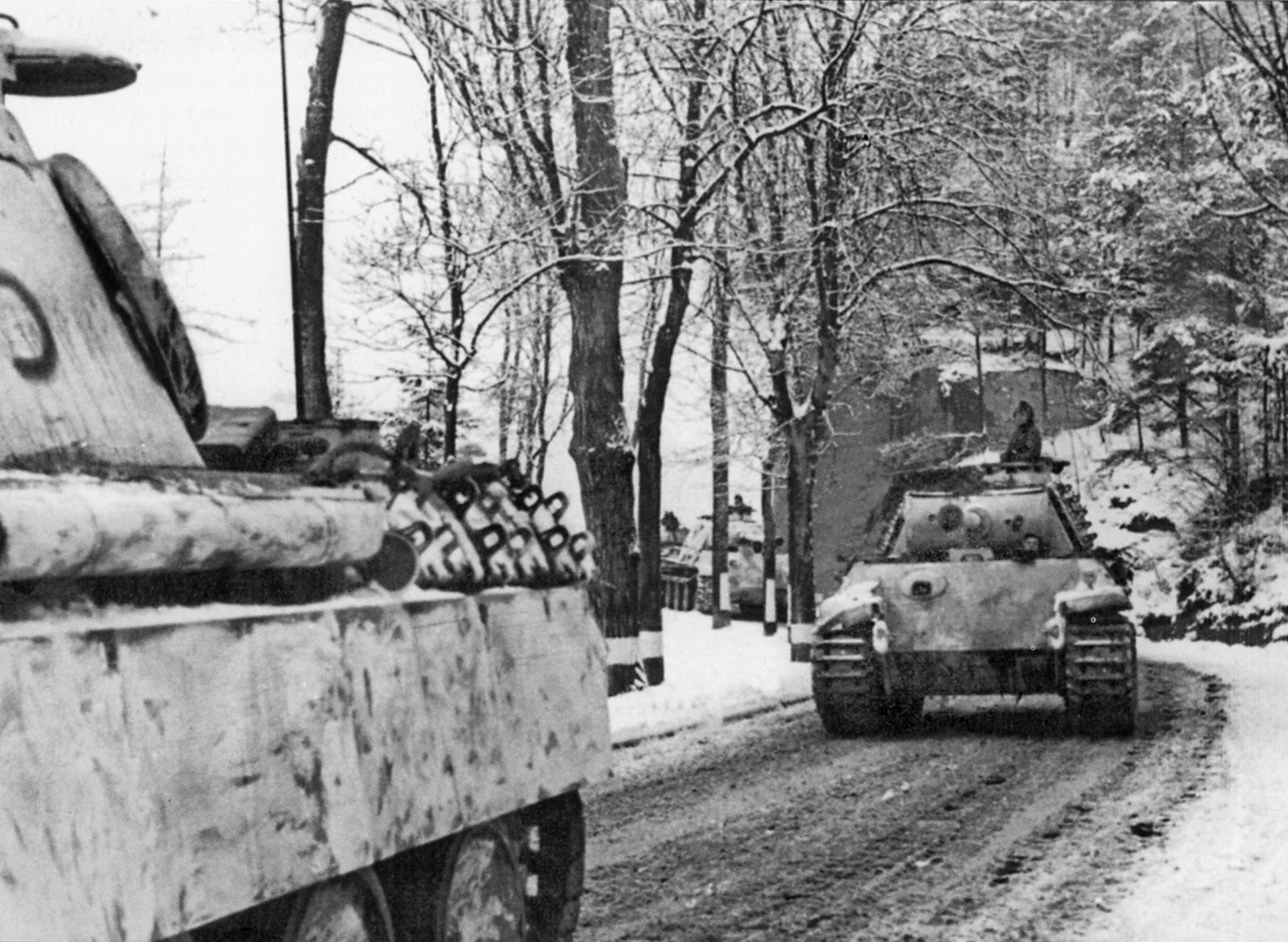
Yet, despite the gallant delaying actions fought by U.S. troops at many locations in the Bulge, the Germans had penetrated to 60 miles west of Celles, Belgium, by December 19. At high tide, the enemy columns reached within a few miles of the strategic River Meuse, and, without knowing it, passed within a quarter-mile of the First Army’s main supply depot at Spa, Belgium.
General Bradley was slow to grasp the gravity of the situation. “Pardon my French,” he muttered in his Luxembourg war room, “but where in hell has this son of a bitch gotten all his strength?” Field intelligence and aerial reconnaissance reports of an ominous German buildup in the Schnee Eifel a few miles east of the Ardennes had been disregarded because the Allied high command believed the German Army no longer capable of a major offensive. Enemy security precautions for the counter-offensive had been watertight.
Even the usually astute General Bernard L. Montgomery, commander of the British 21st Army Group, had summarized on the very morning of December 16, “The enemy is at present fighting a defensive campaign on all fronts; his situation is such that he cannot stage major offensive operations.”
It was not until the evening of December 17 that General Eisenhower took a more realistic view and ordered the 82nd and 101st Airborne Divisions, the only two units readily available, to shore up the faltering American formations in the Bulge as a stopgap measure. The two divisions were still refitting and resting after their battering in the ill-fated Operation Market-Garden, the airborne invasion of Holland, that September. Meanwhile, Eisenhower ordered General Montgomery to take over command of U.S. forces on the northern flank of the Bulge. One of the first Allied commanders to realize the gravity of the German breakthrough, Monty ordered British Army units to hasten to the strategic River Meuse and defend its crossings.
In France, trucks and semi-trailers of the Army Transportation Corps’ famed Red Ball Express were swiftly marshaled, and the American paratroopers were rushed into action on December 17-18. The 82nd Airborne was trucked to the Werbomont area on the northern flank of the Bulge, while the 101st Airborne raced in a serpentine convoy for 300 miles from its rest area at Mourmelon-le-Grand near Reims, France, to Bastogne. The Screaming Eagles rolled into the Bastogne area to join Combat Command B of the 10th Armored Division none too soon. The Germans were closing in, and the strategic town was soon to be under siege.
The men of the 101st Airborne hastily dug in and set up a defense perimeter, led by Brig. Gen. Anthony C. McAuliffe, a peppery but genial artilleryman and 1918 graduate of West Point. Nicknamed “Old Crock” by his men, McAuliffe was the division artillery commander now serving as temporary divisional leader in the absence of handsome, scholarly Maj. Gen. Maxwell D. Taylor, who was in Washington, D.C.
Bastogne was soon pressed by the 2nd Panzer, Panzer Lehr, and 26th Volksgrenadier Divisions led by General Heinrich von Luttwitz. The town was isolated on December 20, but the Screaming Eagles held firm stubbornly and the panzers were eventually forced to swing past them in their westward advance. The timetable of the enemy counteroffensive was being disrupted.
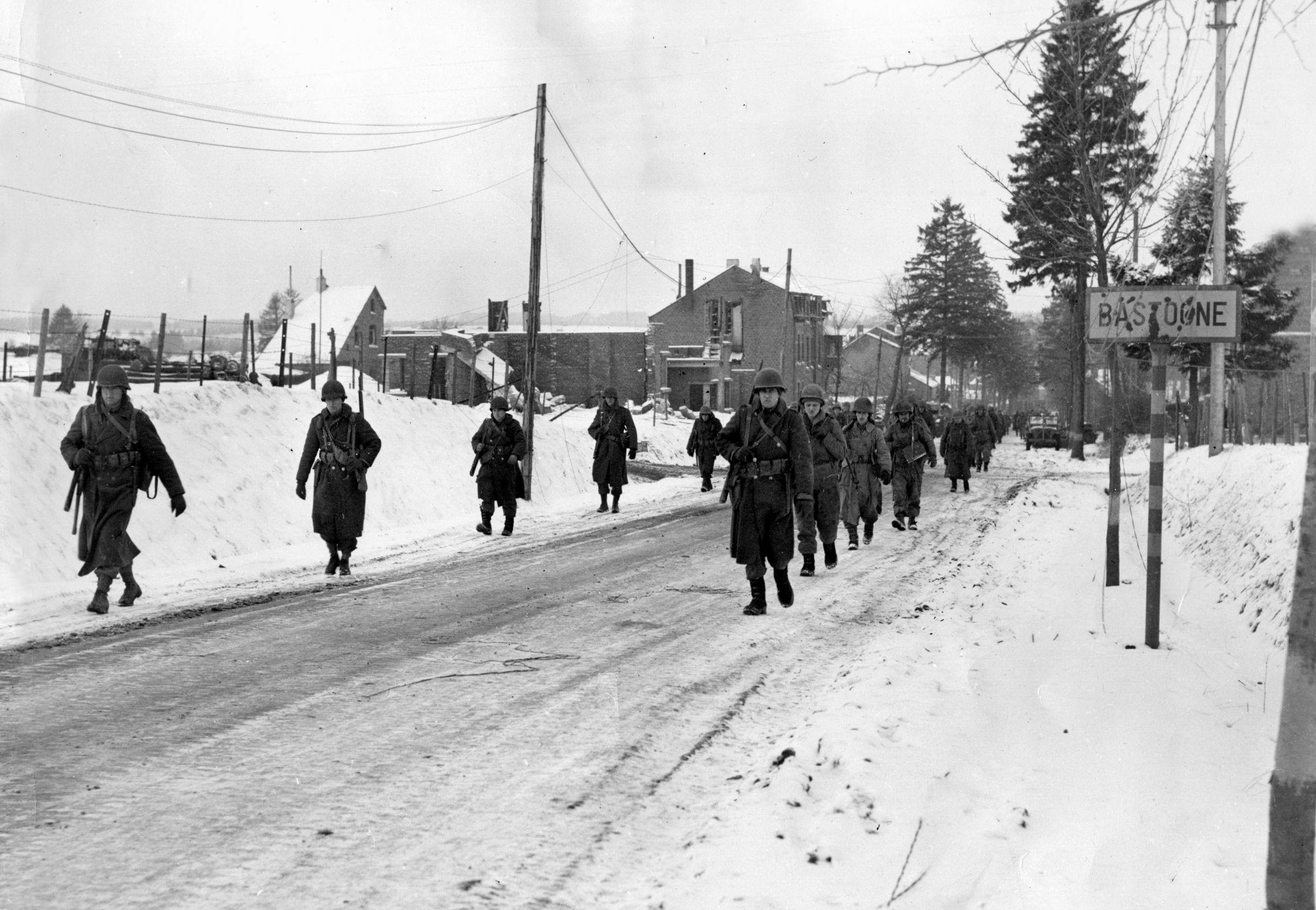
Although the Allies had aerial superiority, low clouds and fog hampered support operations. Shelled, mortared, and sporadically bombed, Bastogne was now surrounded. When an aerial observer asked a radio operator in the town what the situation was, the operator replied wryly, “Picture us as the hole in the doughnut.” The outlook grew increasingly dismal for the besieged paratroopers as ammunition, rations, and medical supplies soon ran short. In makeshift first aid stations set up in cellars and churches, Belgian nurses, housewives, and priests tended to wounded soldiers as best they could, but when the blood plasma and medicine ran out, all they could offer to ease the soldiers’ suffering was cognac.
Day after day, the hungry and weary GIs heard the drone of high flying Boeing B-17 Flying Fortress and Consolidated B-24 Liberator heavy bomber formations on their way to targets in Germany, but when they looked up for a glimpse of lower-flying C-47 transports bringing supplies, there were none.
At noon on December 22, two German officers were sent by General Luttwitz under a white flag to seek “the honorable surrender of the encircled town.” In his basement command center on the northern edge of Bastogne, General McAuliffe faced a military and moral dilemma. He agonized over the fact that his men and Belgian civilians were being killed and wounded every day, but McAuliffe, a decorated veteran of Normandy, was not about to surrender.
McAuliffe’s immediate reaction to the enemy demand was to scrawl the word “Nuts!” on a scrap of paper and hand it to a junior officer to turn over to the German emissaries. They said they did not understand the word, and asked, “Is your commander’s reply affirmative or negative?” McAuliffe’s aide said, “My commander’s reply is ‘Nuts.’ It means ‘Go to hell.’ You understand that, don’t you?” Some observers in McAuliffe’s command center at the time believed that he used more profane language, but, in any case, “Nuts!” went down in the history books as one of the most famous utterances of the war.
McAuliffe reported later, “They said they’d give me two hours to decide, and if we didn’t [surrender], they would destroy the town and all the people in it.”
His snappy one-word reply lifted the spirits of the “Battered Bastards of the Bastion of Bastogne,” but a bleak Christmas was approaching for both them and the people of the town. Some of the American officers observed a singular mood of detachment from reality spreading through the ranks. As daylight faded on Christmas Eve, many GIs clambered out of their foxholes and mortar pits to shake hands with each other feelingly.
That evening, a tired, strained General McAuliffe radioed General Middleton at his Neufchateau headquarters. “The finest Christmas present the 101st could get,” said McAuliffe somberly, “would be a relief tomorrow.” Middleton replied just as grimly, “I know, boy, I know.” McAuliffe also radioed the headquarters of Maj. Gen. Hugh J. Gaffey’s 4th Armored Division. “There is only one more shopping day before Christmas,” said McAuliffe.
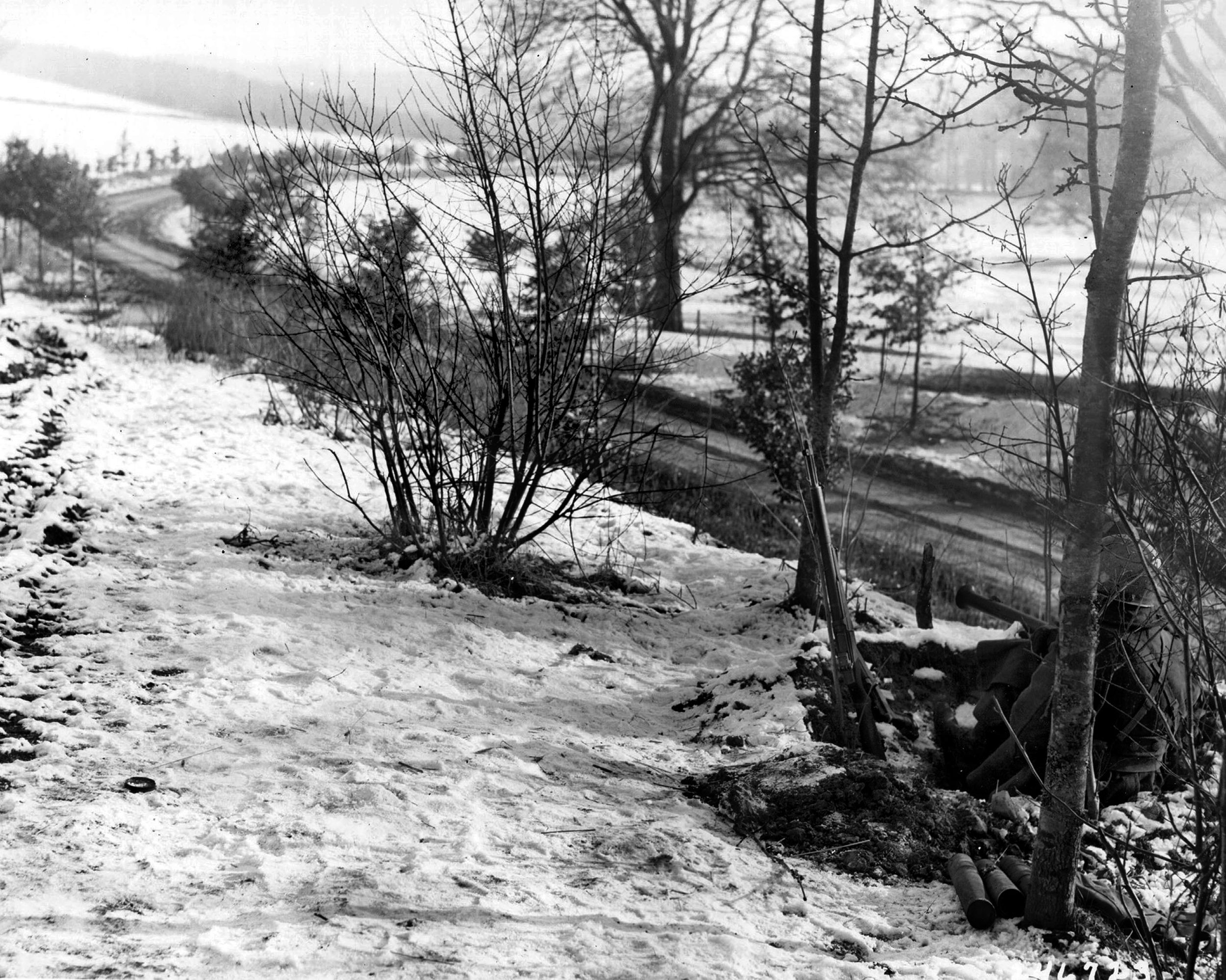
For several days, Sherman tanks, tank destroyers, and halftracks of the 4th Armored Division had been struggling from the south to break through to Bastogne. After an urgent plea from Eisenhower for help in blunting the German counter-offensive, General George S. Patton, Jr., commander of the Third Army, had responded swiftly by directing three of his divisions in eastern France to make a 90-degree turn and highball north to the left flank of the Bulge that stretched from Echternach in Luxembourg to Bastogne. It was a logistical nightmare, but one of the speediest and most brilliant maneuvers of the war. It astounded the Germans.
The 4th Armored had to march 151 miles from Fenetrange in French Lorraine to Vaux-les-Rosieres in Belgium, and it covered the distance in an incredible 19 hours. However, a few miles southwest of Bastogne the division was held up by snow, fog, ice and cratered roads, and a blown bridge. The tankers, many of them suffering from frostbite, had to battle teller mines and the crack German 5th Parachute Division.
Meanwhile, in Bastogne on that moonlit bitterly cold Christmas Eve, the 3,500 civilians trapped in the besieged town tried to keep themselves warm in their cellars and church crypts for another night. Many of them huddled on the damp floors of the cellar in Abbé Jean-Baptiste Musty’s great seminary. Shivering and infested by lice, the men, women, and children lay on filthy mattresses. By flickering candlelight, the sisters of the seminary clinic circulated to comfort the old and young.
Headquarters personnel of the 101st Airborne Division gathered in the mess hall for their sundown meal, quieter and more thoughtful than usual. Roman Catholic soldiers spread the word that Mass would be celebrated at 7 pm, and when the time neared, 100 or more men entered a large room that had been converted into a chapel. Candles on the makeshift altar furnished light, and tapers burned in tin fixtures along the bare walls.
A young Army chaplain in vestments celebrated the Mass, assisted by enlisted men. The worshippers sang Christmas carols to the accompaniment of a little field organ. In a brief homily, the chaplain remarked on the sacrifices that were required in Bastogne that Christmas and called for trust in God. “Do not plan,” he counseled, “for God’s plan will prevail.”
Meanwhile, in the transept of the vaulted chapel in Abbé Musty’s seminary, officers and GIs sang carols while wounded men, lying on stretchers on the stone floors, listened, their eyes glistening. Bright moonlight filtered through broken stained glass windows, and snow sifted from cracks in the roof as voices chorused “O Little Town of Bethlehem.”
There was a pause, and then the soldiers began singing Silent Night. The wounded, covering the entire floor, joined in. This Mass was interrupted by a loud explosion in another part of the town, but then the singing of carols continued. There were other religious services that night in Bastogne as soldiers tried to drown out the rumble of artillery and mortar fire with thoughts of home more than 3,000 miles away. Men of the 502nd Parachute Infantry Regiment gathered to pray in the 10th century chapel of the Rolle Chateau, their command post, while General McAuliffe joined the men of one of his field artillery battalions for a midnight Mass on the snowy outskirts of the town.
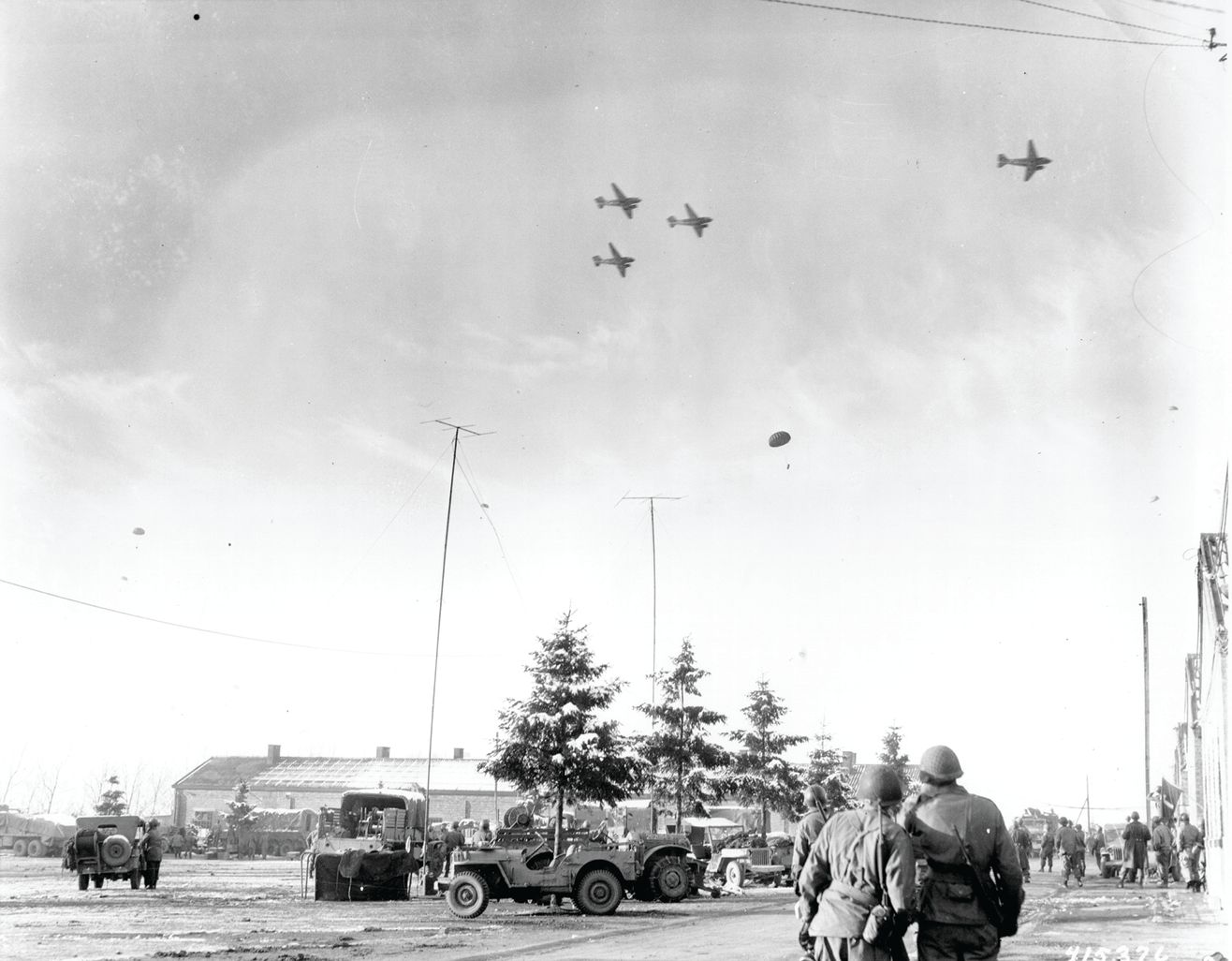
Meanwhile, Lt. Col. Harry W.O. Kinnard, the divisional operations officer, drafted a Christmas Day greeting to the troops from the commanding general. He wrote, “What’s merry about all this? You ask. We’re fighting—it’s cold—we aren’t home. All true, but … we have stopped cold everything that has been thrown at us from the north, east, southwest.… We continue to hold Bastogne. By holding Bastogne, we assure the success of the Allied armies. We are giving our country and our loved ones at home a worthy Christmas present, and, being privileged to take part in this gallant feat of arms, are truly making for ourselves a Merry Christmas.”
The relative quiet of that poignant Christmas Eve was shattered when German bombs crashed down on Bastogne, inflicting severe casualties. One bomb struck the medical aid station of Colonel William Roberts’s Combat Command B of the 10th Armored Division, burying 20 patients in the debris. Among the dead was Nurse Renée Lemaîre, the daughter of a hardware merchant, who was pinned beneath a fallen timber. She had been tending the wounded. It was the worst bombing the town had endured, and dozens of buildings burned. Army ambulances roared through the dark and shambled streets, and volunteers dug frantically for survivors in the rubble.
The Battle of Bastogne was nearing its climax, and the defenders knew that their time was running out if they did not soon receive relief or air-dropped supplies. A brief break in the miserable weather on December 23 had enabled the dropping of some supplies in the Bulge, but it was not enough.
It was a troubled Christmas Eve in Bastogne. Around 2:30 am, an all-out German artillery and mortar barrage fell upon the Americans’ northwest perimeter, and 18 tanks and two infantry battalions burst through. The defenses were breached in two places, but the penetrations were contained by McAuliffe’s skillfully deployed reserves. The 327th Glider Infantry Regiment was committed along its front, and tank destroyers and field guns opened up on the enemy. Every man who could carry a rifle was rounded up in the town and rushed to the defensive posts—company clerks, cooks, radiomen, engineers, walking wounded, and even chaplains. It was the closest call yet for the defenders of Bastogne, but the Germans were driven back.
Meanwhile, the lead elements of the 4th Armored Division were stalled five miles to the south because of heavy resistance, and General Patton, the architect of the relief effort, was chafing at the delay. He had ordered Monsignor James H. O’Neill, the chief Third Army chaplain, to publish a prayer calling for good weather. “See if we can’t get God to work on our side,” said the profane yet religious Patton.
On Christmas morning, he got what he wanted. Patton rose and approved of what he saw, confiding in his diary: “A clear, cold Christmas, lovely weather for killing Germans, which seems a bit queer, seeing whose birthday it is.”
Finally, at 3 pm on the following day, December 26, 1944, thunder filled the air over the Bastogne area as formations of C-47s began dropping much needed supplies. Cheering GIs watched the parachutes blossoming down and raced to retrieve the containers of ammunition, rations, and medicine. Spirits rose in Bastogne.
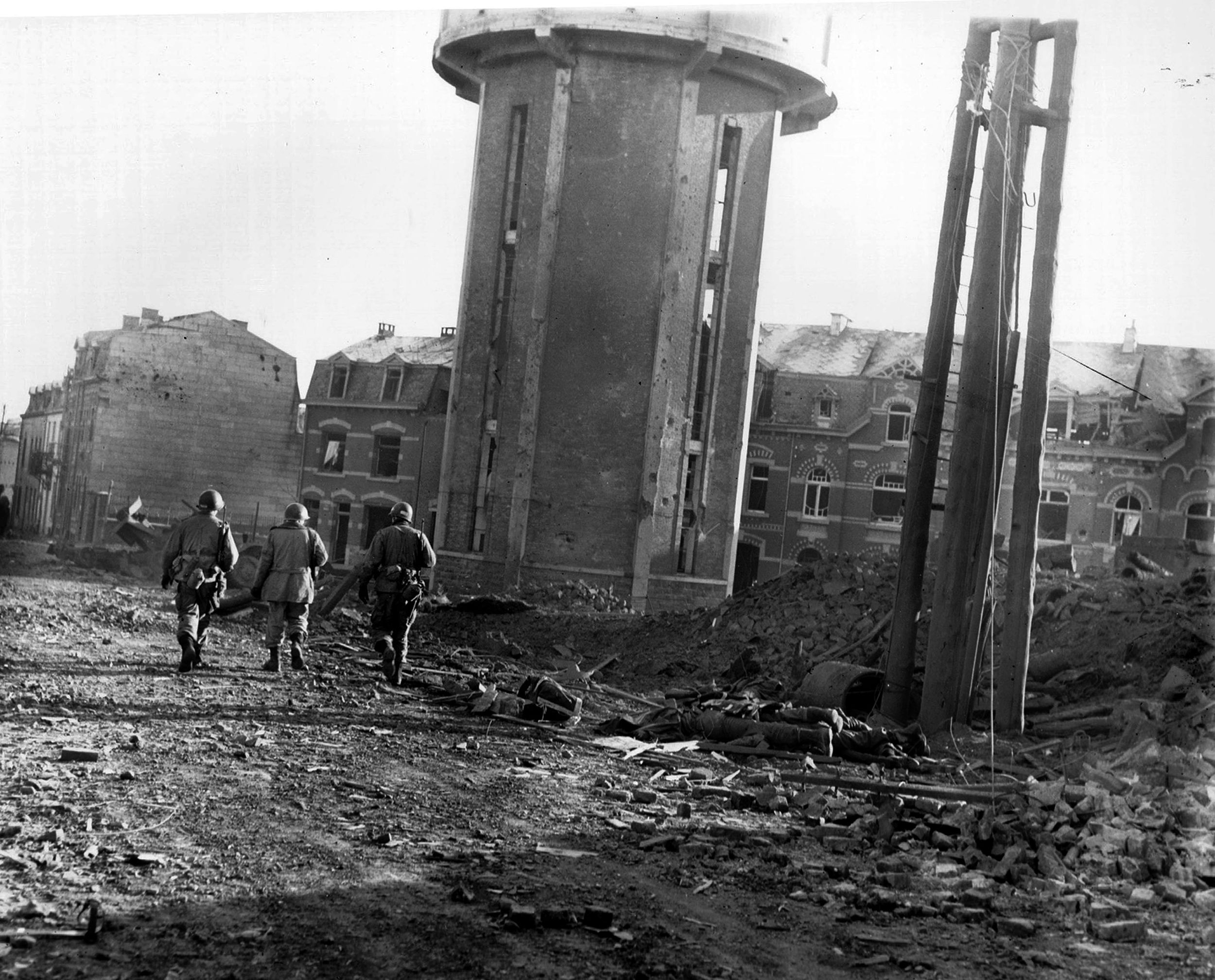
At the same time, south of the village of Assenois on the road to Bastogne, Lt. Col. Creighton W. Abrams, Jr., commander of the 37th Tank Battalion, 4th Armored Division, stood on a hill watching the supply parachutes fall on Bastogne. After radioing for permission to push forward, he clambered into the turret of his Sherman tank, clamped a cigar between his teeth, and told his tankers, “We’re going in to those people now. Let ‘er roll!”
Supported by artillery salvos and with all guns firing, the battalion’s Shermans, halftracks, and tank destroyers rumbled forward. They blasted their way through Assenois and reached the outer southern perimeter of Bastogne shortly before 5 pm. The last 16 miles into Bastogne were the toughest that a unit of the 4th Armored Division had ever fought.
There would be fierce fighting for several days, but the eight-day ordeal was over for General McAuliffe’s stubborn Screaming Eagles and the heroic townspeople of Bastogne. In recognition of his inspired leadership, McAuliffe was personally awarded the Distinguished Service Cross by General Patton. The 101st Airborne Division received a Presidential Unit Citation.
The Allies had faced disaster at the start of the Battle of the Bulge, but the stout American defense, harsh weather, and a critical shortage of fuel had ground the German columns to a halt. The enemy had paid the price for Hitler’s last folly. “The backbone of the western front was broken,” as Field Marshal von Rundstedt said. By January 31, 1945, the Americans, with British help, had straightened the Bulge, though the Allied advance into Germany had been delayed by six costly weeks.
In the Bulge, the Germans underrated the tenacity, logistical capability, and courage of the GIs. “When all is said and done,” observed General Montgomery, “I shall always feel that Rundstedt was really beaten by the good fighting qualities of the American soldier.”
British Prime Minister Winston Churchill rose in the House of Commons on January 18, 1945, and said, “The United States troops have done almost all the fighting and have suffered almost all the losses. We must not forget that it is to American homes that the telegrams of personal losses and anxiety have been going during the past month…. Care must be taken not to claim for the British Army an undue share of what is undoubtedly the greatest American battle of the war, and will, I believe, be regarded as an ever-famous American victory.”
Author Michael D. Hull resides in Enfield, Connecticut, and is a frequent contributor to WWII History.
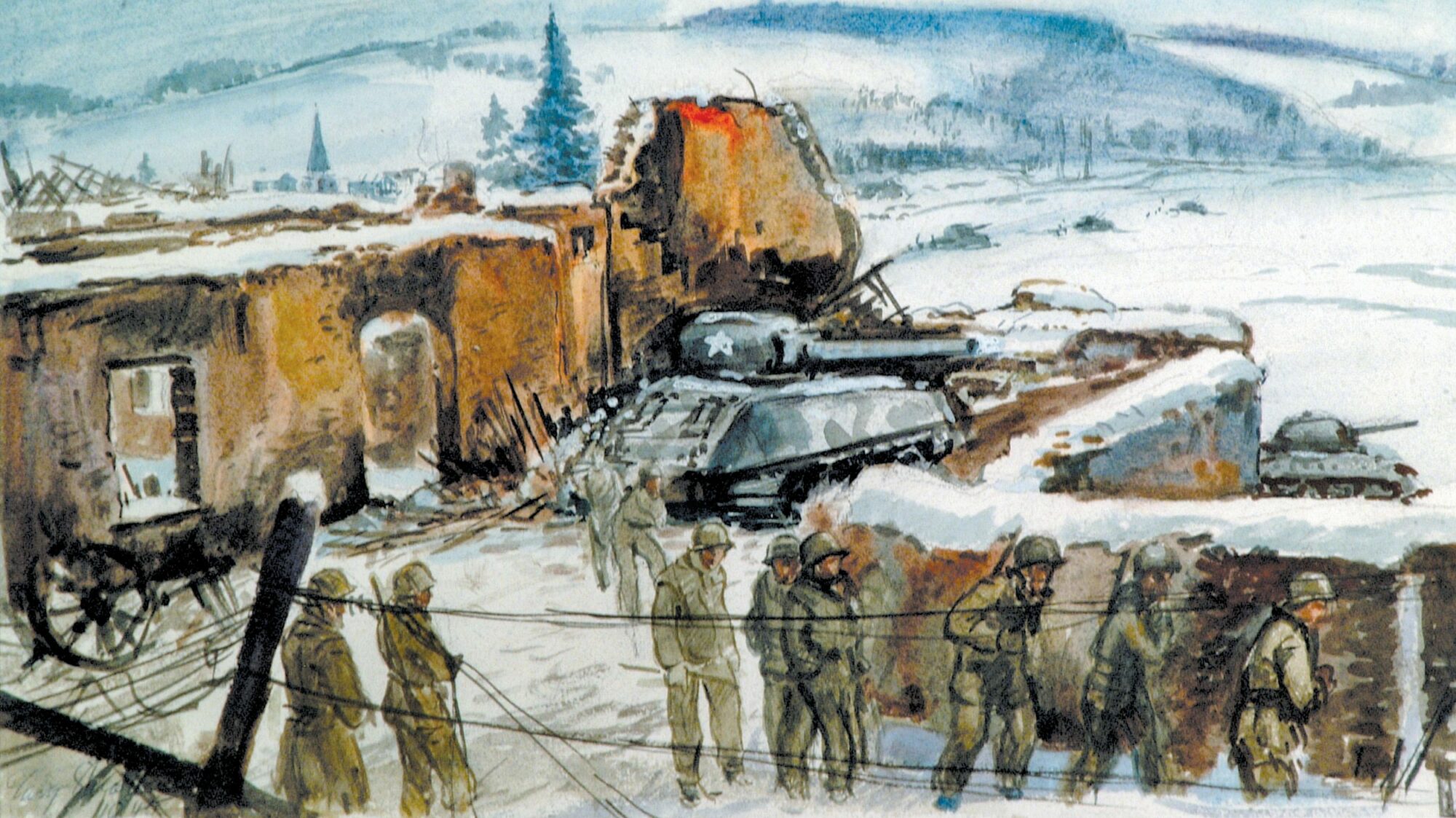

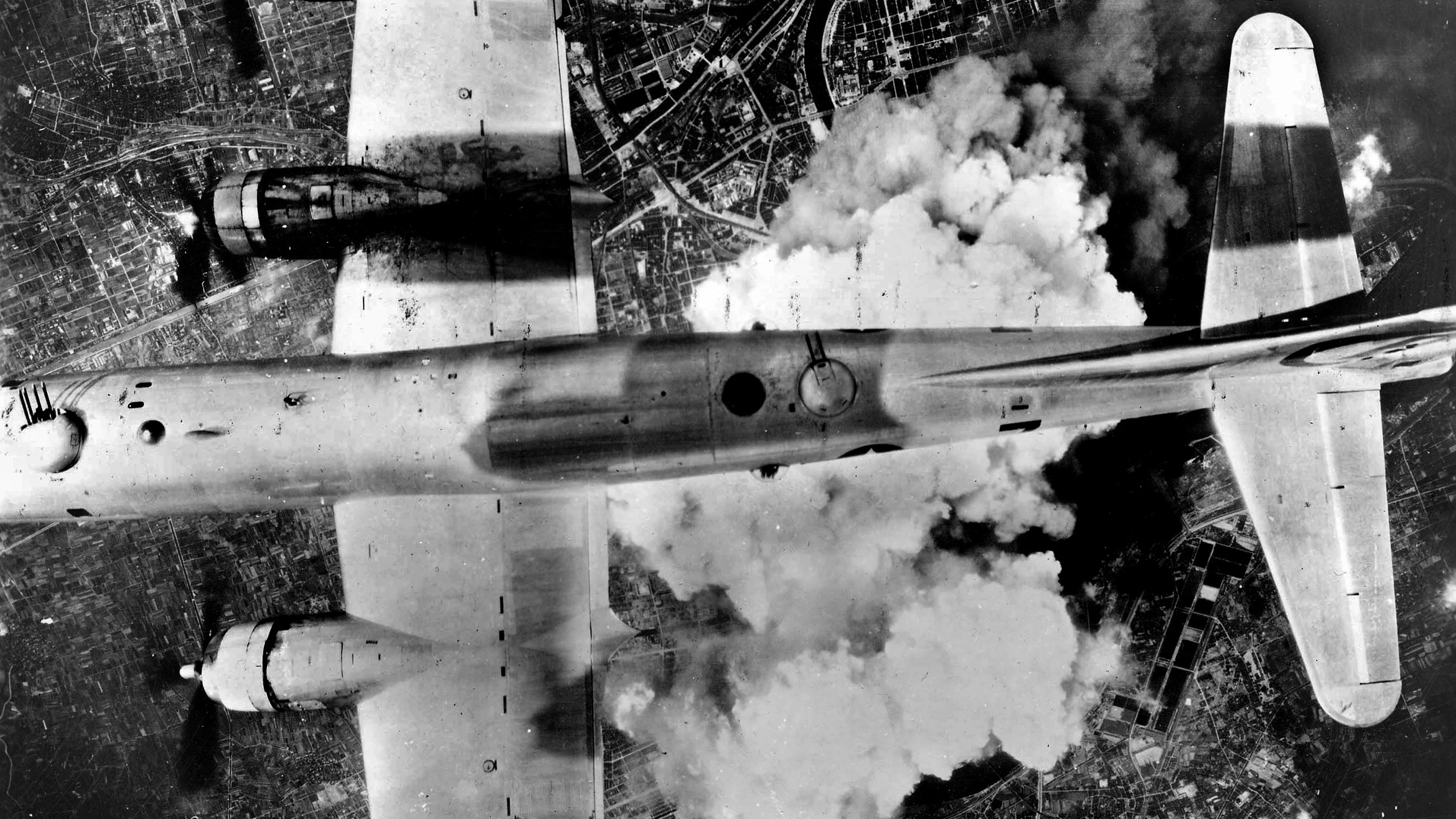
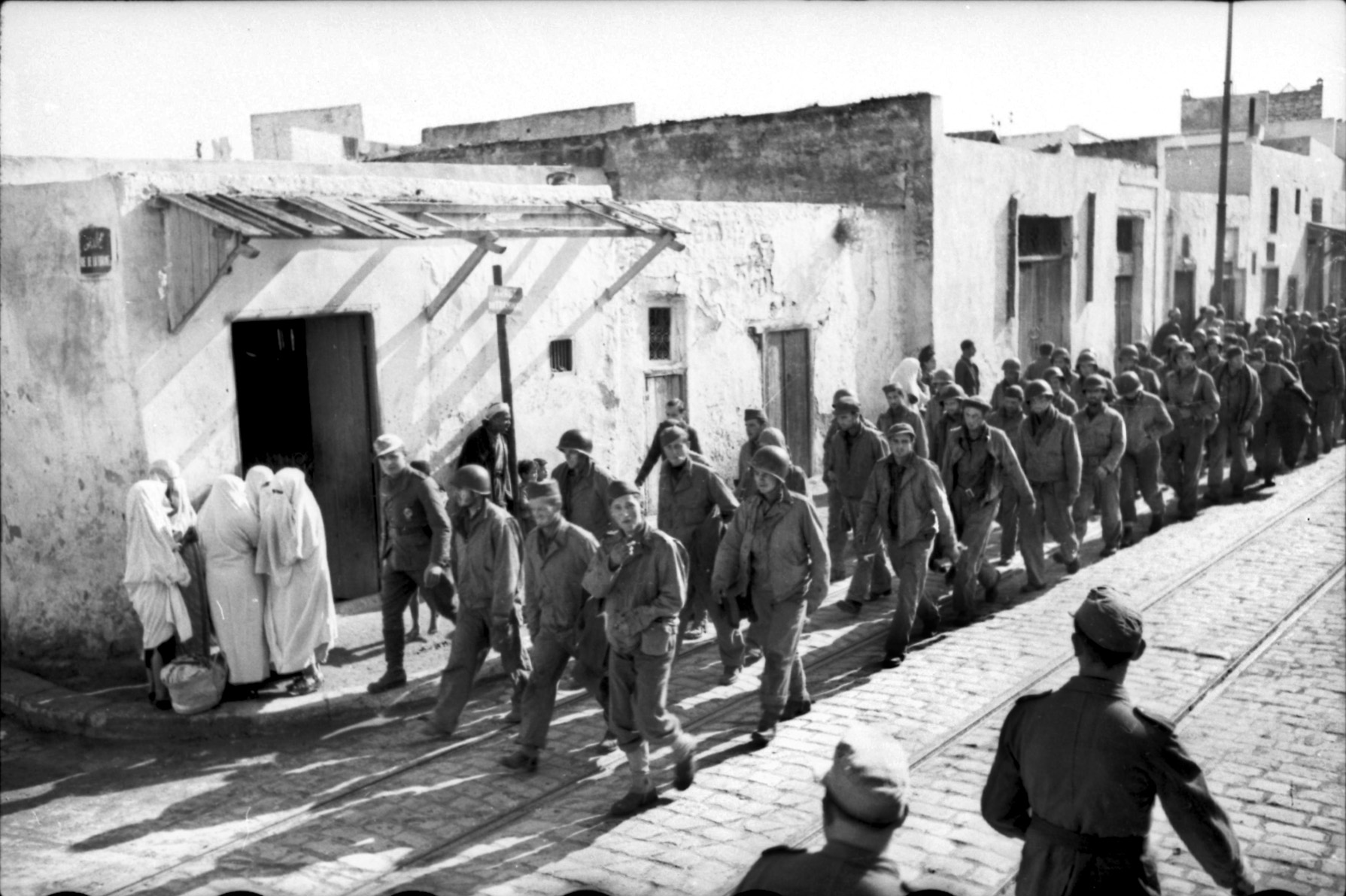
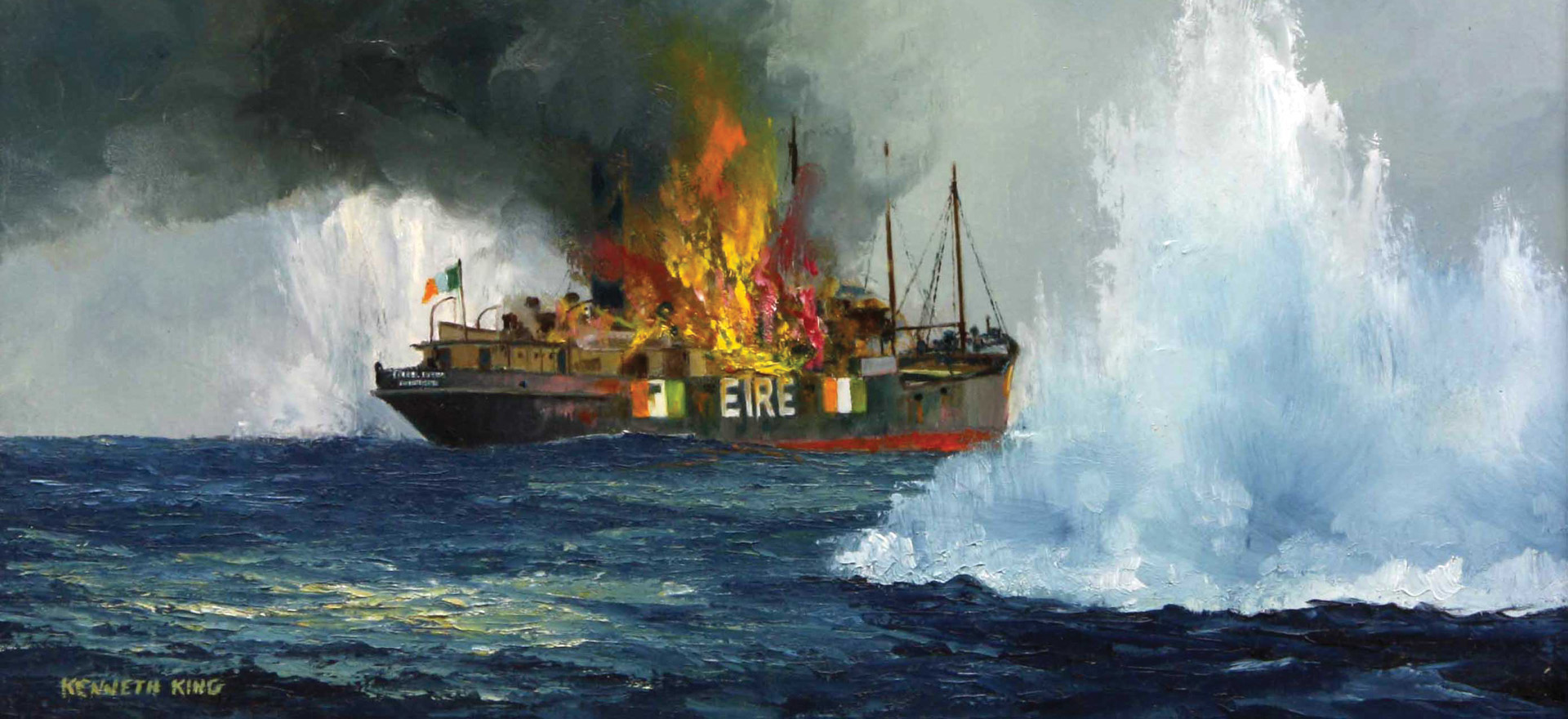
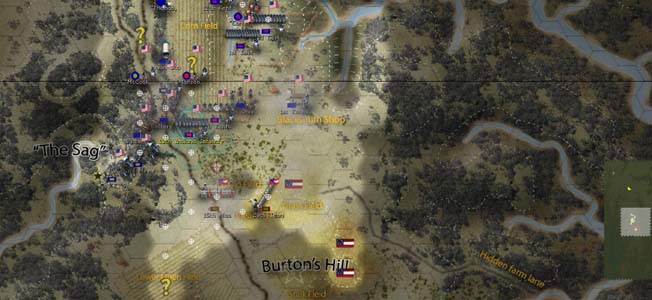
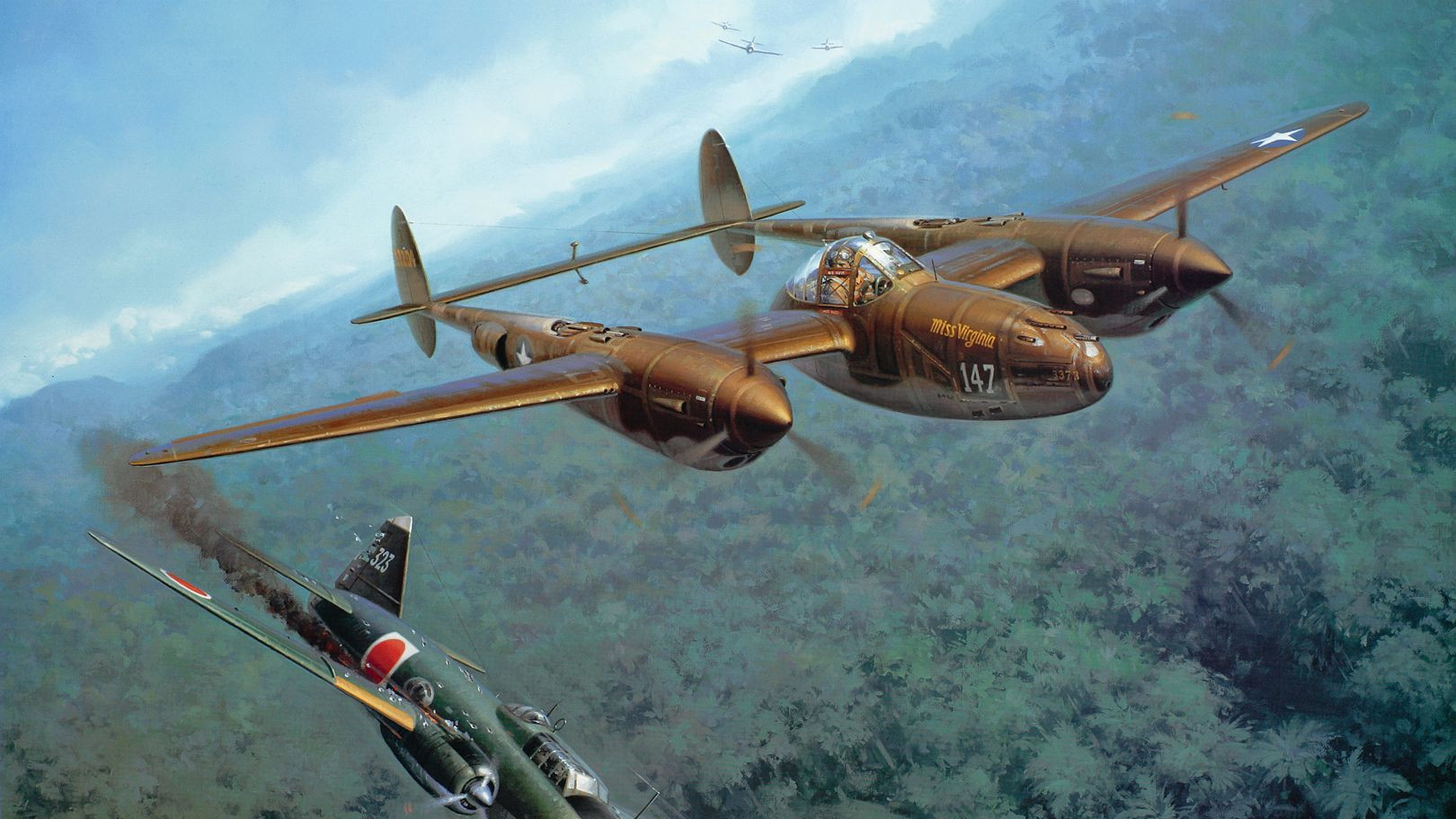
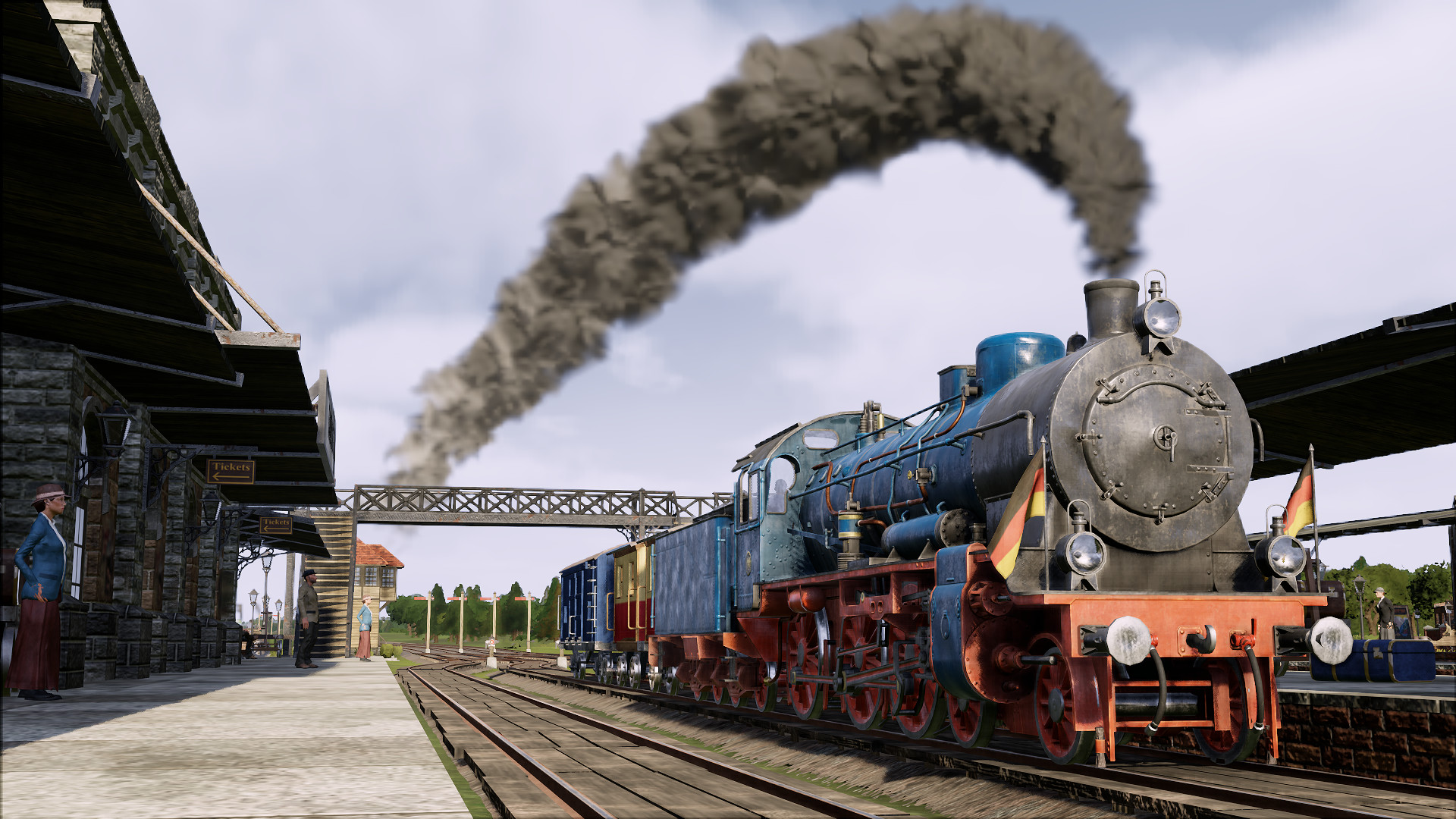
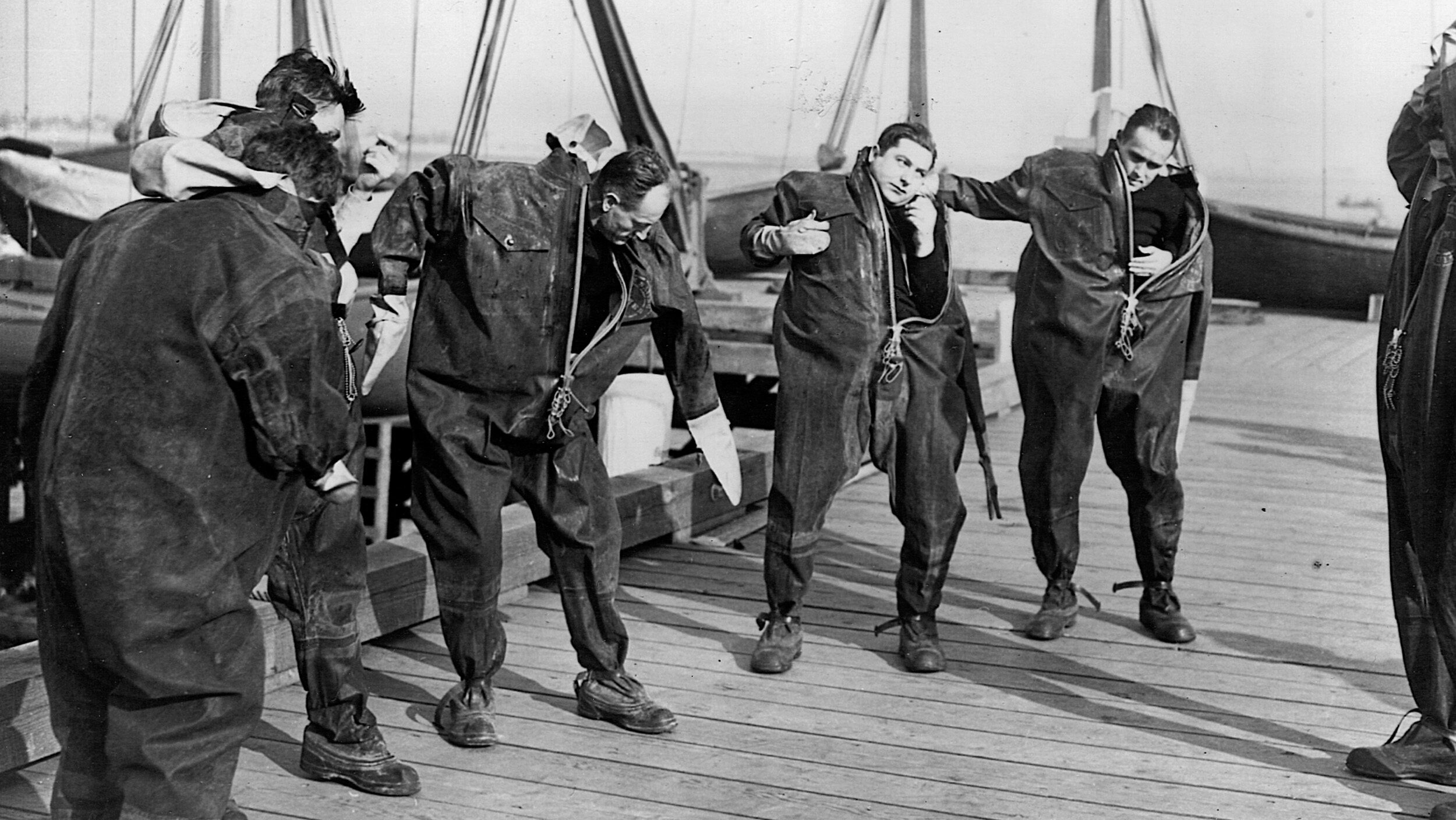
Join The Conversation
Comments
View All Comments